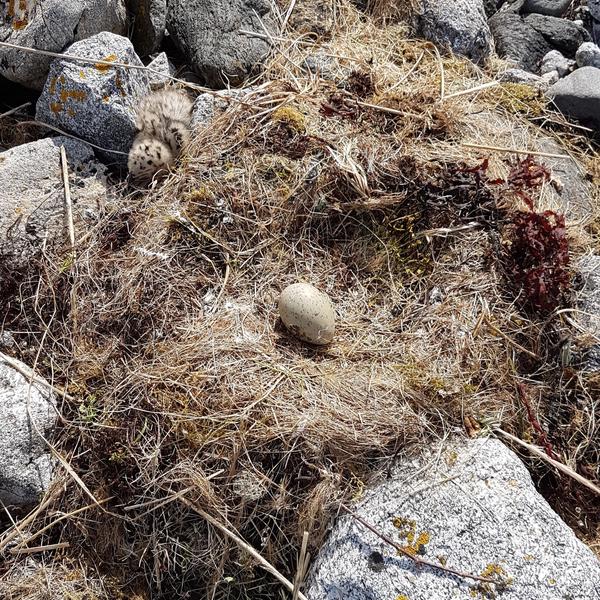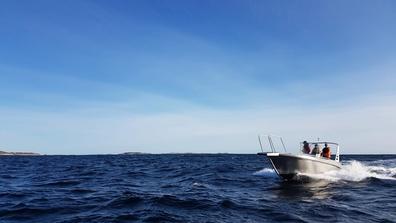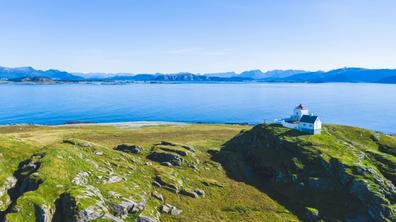A clean-up operation must have a positive impact on the environment and must not result in unnecessary damage or interference. To achieve this, you need to perform an environmental assessment for each clean-up operation.
Careful movement
The right to roam grants wide opportunities for the use of uncultivated land, but you will not always be able to clean up where, when, and how you want to. As an organiser, it is important that you have the required knowledge to ensure considerate movement, so that the desire to do good for nature is not counterproductive.
The Outdoor Recreation Act sets out requirements concerning considerate and careful movement, including clean-up operations. The Nature Diversity Act includes a general duty of care that beach cleaners must adhere to. For beach cleaners, this duty will mean, among other things, that you must behave attentively, familiarise yourself with any natural assets you could influence during a clean-up operation and do anything you can to prevent the clean-up activities from inflicting damage to the natural diversity.
The objective of a clean-up operation is to leave the landscape in a better condition than it was in before, and with few traces of the operation.
Is the landscape in the clean-up area valuable?
You should obtain knowledge about the landscape in the area you want to clean before starting. Birds, animals, geology, vegetation, and landscape have inherent value, but there are certain species and habitats that are more vulnerable than others. This applies to e.g., animals, vegetation and birds that are endangered. Protected areas, such as nature reserves, national parks and landscape conservation areas often have vulnerable landscapes and are considered important to natural diversity. They can be found in several national map services that collect data from Naturbase. Information about habitats, protected areas and vulnerable species is also available in Rent hav.

Clean-up operations during nesting and breeding season
Animals and birds are vulnerable during the nesting and breeding season in spring and summer. So please consider whether it is necessary to perform the clean-up operation during nesting and breading season or you could schedule the operation for a different time of year.
If it is a protected area with banned access,
It is illegal to perform clean-up activities during this period. If it is a recreational area or in your local environment, you can perform clean-up activities, but you must always be careful.
The species database, Artsdatabanken, contains valuable information about species in Norway. If you have any doubts about whether you should perform clean-up activities during the nesting and breeding season, please contact the County Governor, the Norwegian Nature Surveillance or the Norwegian Ornithological Society.
Should we pull and drag it, shovel, and dig it up or leave it behind?
Some waste can be stuck, buried in sand, or partly overgrown by vegetation. To dig, pull and drag waste that is buried could have consequences for the vegetation, which would take a long time to re-establish. You therefore need to consider the extent of the intervention compared to how much waste you will be able to remove. In some cases, it will also be prohibited.

Langs kyst og elveløp er vegetasjonen også med på å binde jordsmonnet. Ved å grave fram og ta bort vegetasjon for å fjerne forsøpling, kan landskapet bli mer utsatt for erosjon fra bølger, nedbør, bekker og elver. Det er også viktig å ha sjekket at det ikke er registrerte kulturminner i området.
Tenk over dronebruk
Droner er et effektivt redskap for å kartlegge forsøpling, men kan forstyrre fugle-, dyre- og friluftsliv. Derfor er hensynsfull og varsom bruk av drone viktig. Hekke- og yngletida er en sårbar tid for livet i naturen, og støy fra en drone kan få konsekvenser for dyreliv. Du bør derfor tenke gjennom om bruk av drone er nødvendig. I verneområder er bruk av droner ofte begrenset, og i noen tilfeller forbudt. Da må du få dispensasjon for å fly drone. Her finner du regler og retningslinjer for kommersiell bruk av drone og bruk av hobbydrone.
Motorisert ferdsel
Motorferdsel i utmark er som hovedregel ikke lov i Norge, og det gjelder blant annet ATV, minigravere og traktor. Hvis det er behov for å bruke dette i en ryddeaksjon for å frakte avfall eller fjerne avfall må du søke om dispensasjon eller tillatelse fra kommunen på forhånd. Hvis dere bruker båt under ryddeaksjoner, er det viktig å overholde ferdselsforbud i verneområder ved ilandstigning. Du kan finne mer informasjon om hvilke hensyn du må ta og begrensninger for båttrafikk i sjøkart.
If the pdf does not include images, please click Cancel and try again.





